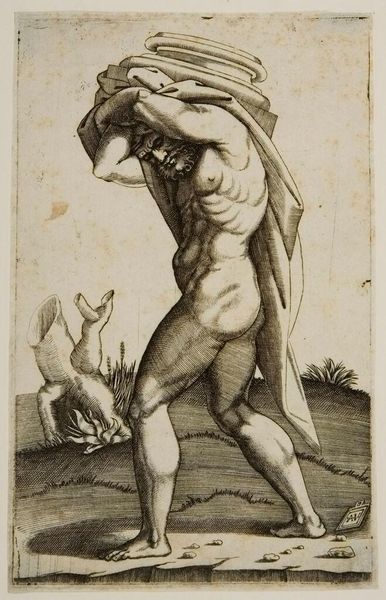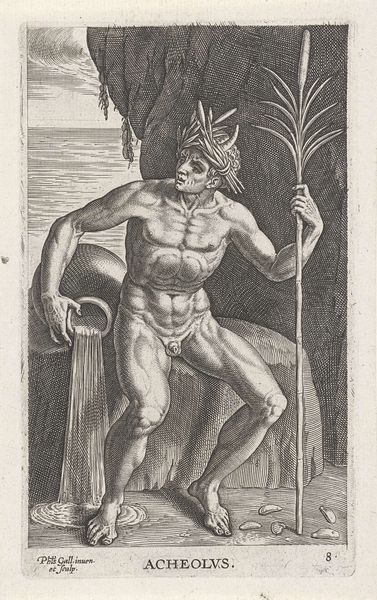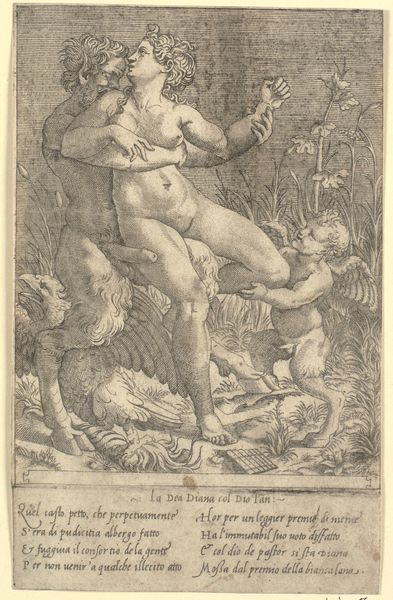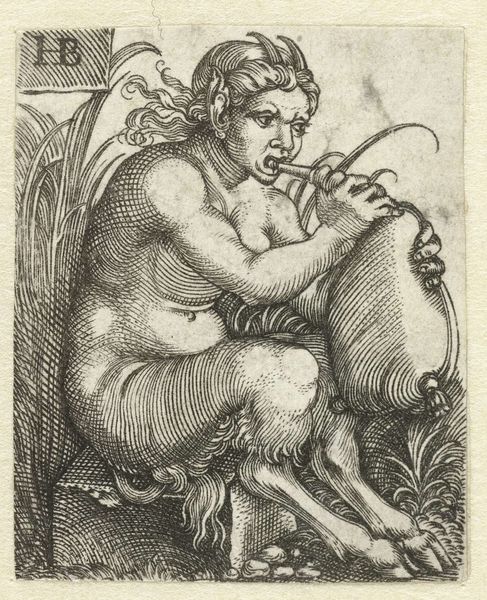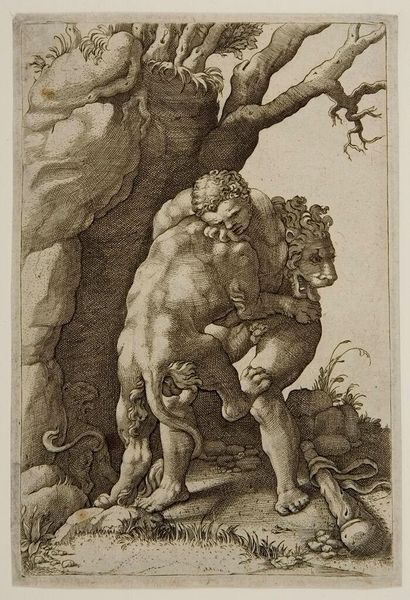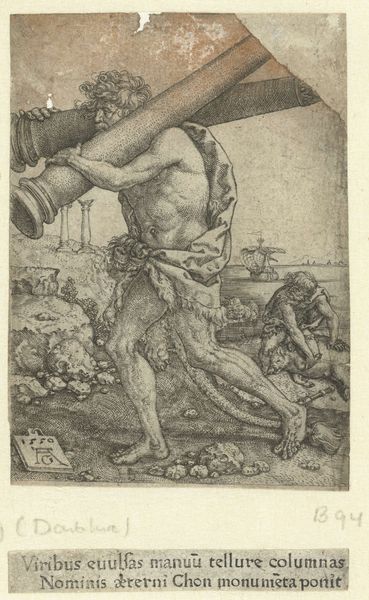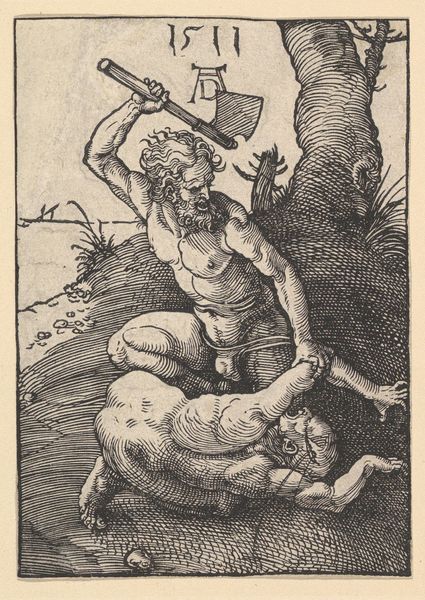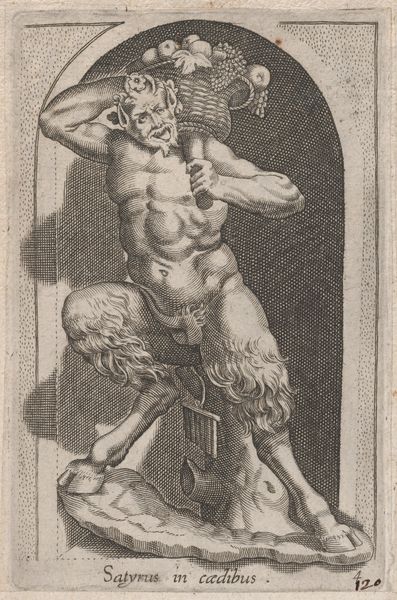
Copyright: CC0 1.0
Curator: Sebald Beham’s "Satyr Blowing a Horn," made around the 16th century, is quite striking. What are your first thoughts? Editor: I am intrigued by how Beham portrays this mythological satyr. It looks like a celebration, but there's also a sense of wildness. How do you interpret this piece within its historical context? Curator: Consider the socio-political climate of 16th-century Germany, a period of religious reformation and social upheaval. Satyrs, symbols of hedonism and freedom, became a way to question social norms. How might this depiction of a satyr challenge or reflect the era’s conventions regarding masculinity and control? Editor: That's a fascinating point. So, the satyr becomes a figure of rebellion against the strict social order? Curator: Precisely. He embodies desires and impulses that were suppressed. This piece isn't just about mythology; it's about the tensions within society itself. This new perspective on societal rebellion gives the piece new power. Editor: That definitely shifts my understanding. I see it now as more than just a mythological scene; it's a commentary on societal constraints.
Comments
No comments
Be the first to comment and join the conversation on the ultimate creative platform.

